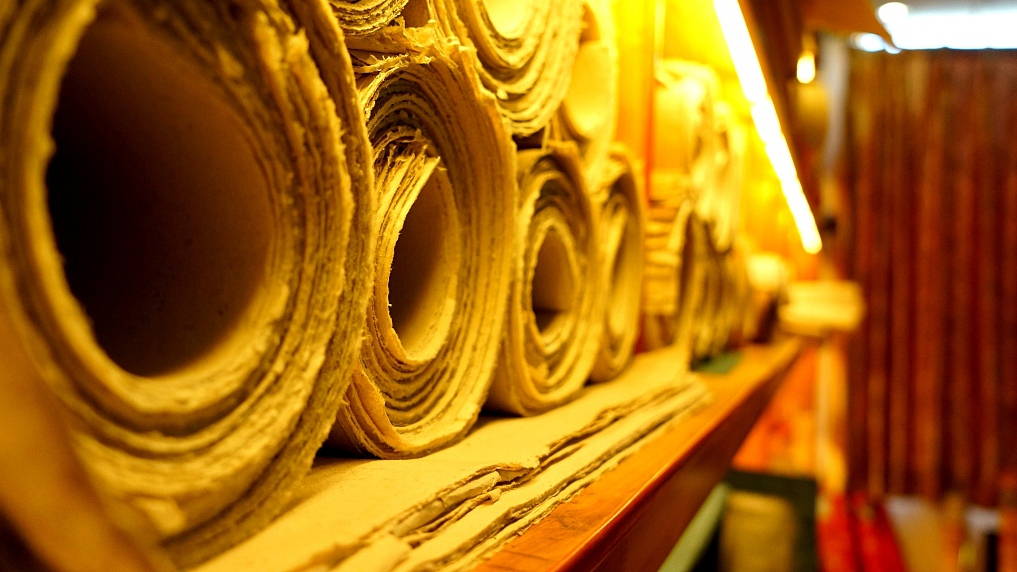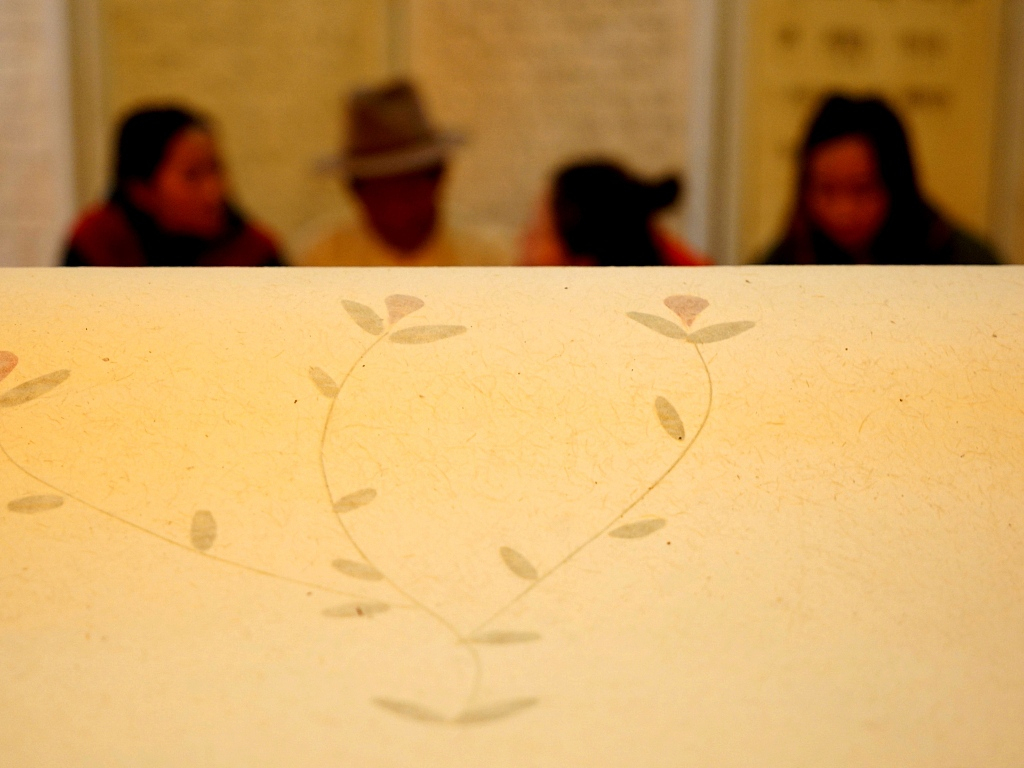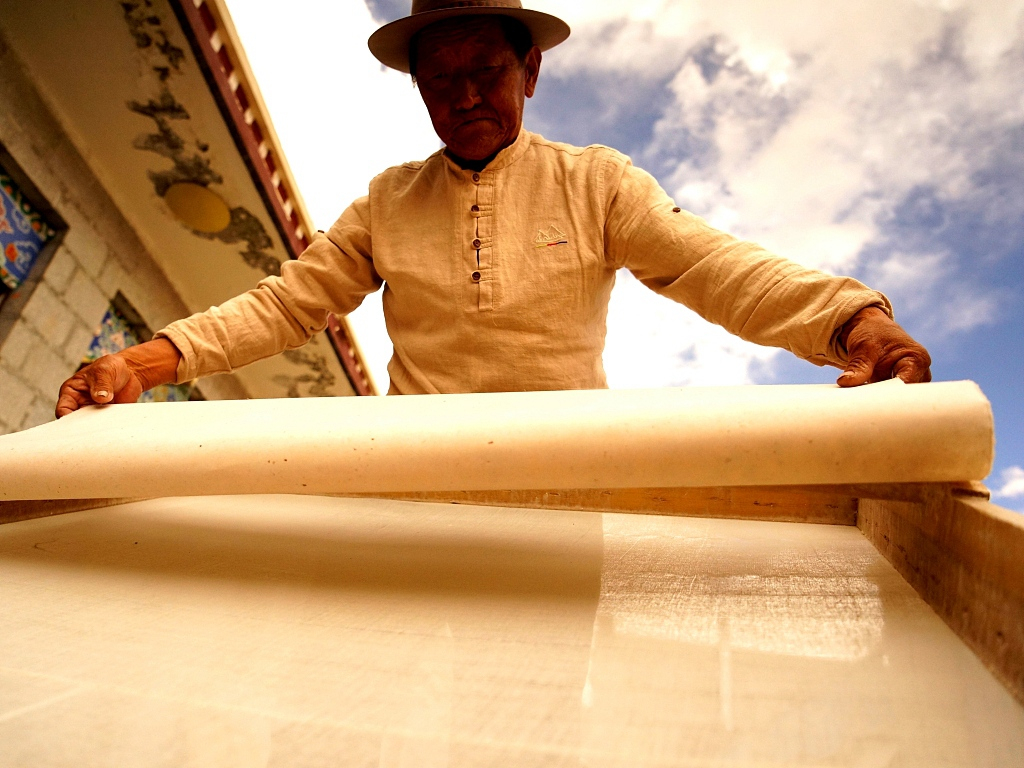

Amid the scruffy high plateau in Nimu County in southwest China’s Tibet Autonomous Region, a poisonous plant called wolfsbane has always thrived.
For more than 1,300 years, it is the root of this plant that has always provided essential material needed to make a kind of paper.
69-year-old Ciren Duobuje’s hands are calloused, and cannot deny the many years he has worked with wolfsbane, to make this ancient kind of paper the way his father, and his father’s father, and many others have.
“It’s very precious for me. My grandpa, father, myself and my sons are all Tibetan paper makers. Four generations of people are continuing to make Tibetan paper,” he said.
The root is beaten into a kind of paste. The paste is then diluted with water and carefully and thinly, ladled into homemade molds. A thin layer is poured, just enough for a sheet of paper.
It’s a process that takes time and skill.

Tibet paper is on display. /VCG Photo
Just one sheet of the paper sells for 100 yuan, or about 15 U.S. dollars.
“To make one piece of paper there are 12 different steps, beginning with digging wolfsbane. It would take one person to make one sheet a day,” said Duobuje’s son, Buqiong.
But there are several people here working daily, on the ancient craft.
The paper is resilient. It can withstand being soaked in water, it is resistant to bugs, and won’t decay. It will last decades and decades, and is used to copy text from holy scripts, with some hanging in Tibet’s most holy temples.
This is all part of a process by the family and the government to preserve the time-honored Tibetan tradition.

Making of Tibet paper. /VCG Photo
Duobujie wants to open a shop in the bustling city of Lhasa, about four hours from the rural shot - a way to introduce foreigners, and many others to the craft.
“I still worry that the Tibetan paper making skill may fade. If we could open a store in Lhasa, people could see Tibetan paper with their own eyes. They can recommend it to others, and that will help promote Tibetan paper,” said Duobuje.
It is a way to keep one foot in the past, but making sure the last chapter of Tibet’s rich, diverse culture has yet to be written.

Copyright © 2018 CGTN. Beijing ICP prepared NO.16065310-3
Copyright © 2018 CGTN. Beijing ICP prepared NO.16065310-3